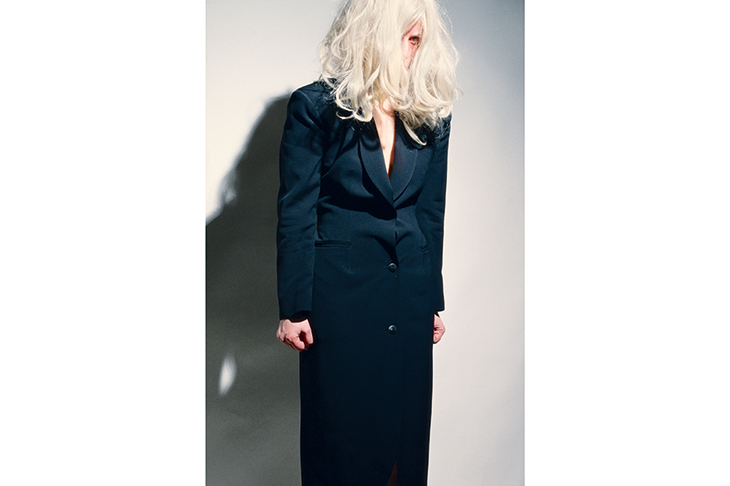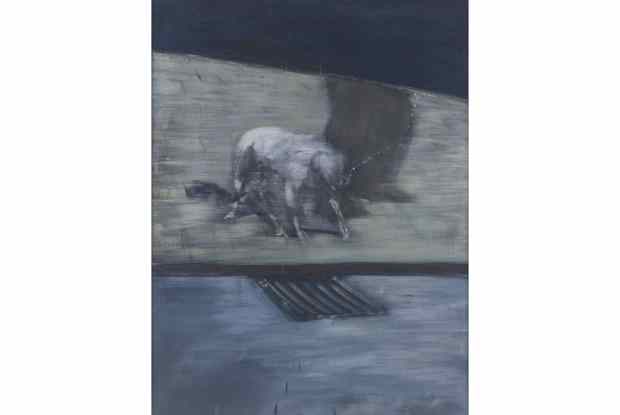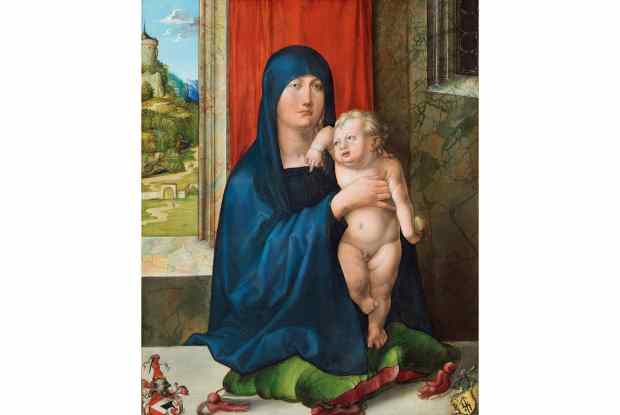The selfie is, of course, a major, and to me mysterious, phenomenon of our age. The sheer indefatigability of selfie-takers, not to mention their number, is amazing. Recently, I stayed in an apartment not far from the Trevi Fountain in Rome — a selfie-magnet so powerful that not only was it surrounded by a dense crowd during daylight hours, but a small, determined knot could still be spotted late at night, doggedly snapping away in the dark under a steady drizzle.
This global fixation adds an extra interest to the retrospective of work by Cindy Sherman at the National Portrait Gallery. She has been making pictures of herself, and little else, for more than four decades. Indeed, it is hard to think of an artist who has documented her own features so exclusively (Gilbert & George are the only comparison that comes to mind).
Sherman was at it in the mid-1970s, long before the front-facing camera was added to smartphones, thus changing human behaviour, at least around well-known views and monuments. But there the comparison ends. Selfies are essentially all the same.
In contrast, Sherman’s 500-odd pictures of herself are all different, often so wildly so that it is difficult to believe you are really looking at her. In some shots she is male, sometimes young, sometimes old, occasionally multiple. In one image from the Flapper series (2016–8), she appears as everyone in a group of four women of various ages from youth to early sixties, all dressed in the fashions of the jazz age.
It is this chameleon-like virtuosity in altering her appearance that makes Sherman’s work gripping — and different. Most portraiture is aimed at producing a recognisable, and preferably flattering, representation of the subject. Sherman tries hard to achieve the opposite. Sometimes, she is trying to overturn presuppositions so deeply ingrained that we are barely aware of them.
In the Fashion series from the 1980s, she wears smart outfits by celebrated designers but presents herself in ways no actual model ever could: desperate, wild-eyed, apparently suffering from a severe hangover, with matted hair and — most impossible of all for a real mannequin — gauche, nervous and un-made up.
Sherman is obviously interested in mismatches between an image and the inner state of the person portrayed. In the series Pink Robes, she imagines herself as a nude glamour model resting between photo shoots in a dressing gown, and looking fed up, bored, hostile and anything but glamorous.
On the other hand, Society Portraits (2008) (see p29) deal more with self-deception: the methods, surgical and cosmetic, by which ageing women try to look young. This, the artist (born 1954) remarks, is a bit scary for her, ‘When I see myself in these older women.’ (The NPG label comments that it is also a bit daring, since these pictures resemble a powerful echelon of the art world.)
In some ways, then, Sherman is the art equivalent of an actor-mimic such as Peter Sellers or Rory Bremner. Her studio equipment partly consists of a wide variety of cosmetics, wigs and prosthetic devices, such as the false plastic breasts that she dons in certain works.
In an early series, Cover Girls (1976), Sherman selected a series of magazines — Vogue, Cosmopolitan, Family Circle — and exhibited the actual covers, together with two in which she replaced the face of the model with her own. Just as a feat of mimicry this is remarkable. Spotting the difference between, say, Jerry Hall on the front of Vogue and Sherman pretending to be Jerry Hall requires careful back-and-forth comparison.
Sherman also adds an extra shot in which she still looks like the original cover but pulls a goofy face. For example, in the case of the Hall cover, she closes her eyes and opens her mouth in the manner of a selfie that most people would instantly delete.
To an extent, it’s a joke, but it’s one that raises a serious question. When you look at the original face of the glossy magazine, to what extent are you seeing a person called ‘Jerry Hall’, and how much an artfully put-together confection of make-up, lighting and textiles? And why, for that matter, is the acceptable, presentable image of a person not one with eyes closed and mouth open?
That which applies to the covers of magazines also applies, mutatis mutandis, to a great deal of traditional portraiture. To the art history-minded, Sherman’s History Portraits will provide extra interest: in these she transforms herself into close representations of sitters for paintings in the manner of Holbein, Raphael, Ingres and others. It’s cleverly, and quite amusingly, done.
As Raphael’s mistress La Fornarina she is clad in gauze and a strap-on prosthetic nude body with cross-eyed nipples. But, again, it leads you to reflect on how much, when you look at a celebrated image like this rather than a human being, you are contemplating the props, costumes and set. In other words, how much is this Hollywood, 16th-century style?
In fact, much of Sherman’s inspiration came from the movies (Hitchcock’s Rear Window was an early favourite). And the rest, it seems, from children’s games. She was a little girl who loved to dress up, and has just carried on doing so ever since. And, as often happens in the arts, what starts by seeming eccentric and individual behaviour ends up seeming much fresher and more interesting than the conventional way of doing things.
Most pictures of people are intended to affirm who they are. Those selfies at the Trevi Fountain were all saying: this is me on another holiday, grinning as usual (which is why it is hard to imagine anyone else being interested in them). Sherman’s self-portraits undermine the idea of personal identity, suggesting — as the philosopher Derek Parfit used to argue — that it’s a great deal more fluid than we like to think.
Got something to add? Join the discussion and comment below.
Get 10 issues for just $10
Subscribe to The Spectator Australia today for the next 10 magazine issues, plus full online access, for just $10.
You might disagree with half of it, but you’ll enjoy reading all of it. Try your first month for free, then just $2 a week for the remainder of your first year.














Comments
Don't miss out
Join the conversation with other Spectator Australia readers. Subscribe to leave a comment.
SUBSCRIBEAlready a subscriber? Log in